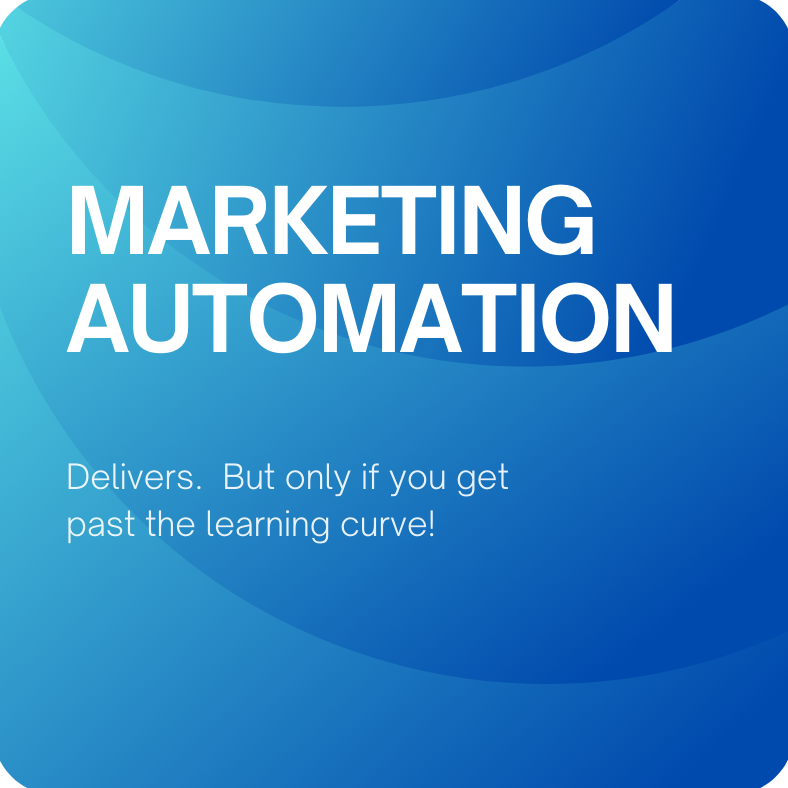I recently left Bislr (now called Autopilot HQ), where I served as CMO. Inquiring minds are asking me what to look for in a “modern” marketing automation solution, now that I can be objective post Bislr.
According to Gleanster (September 2013), the respected marketing research firm, there are 10 things to consider when evaluating next-generation marketing automation solutions.
They include:
1. Focus on Getting Good Data from the Get Go
The single best way to do this is by taking information provided by the prospect and matching it up – in real-time – to intelligence data.
What to look for:
A marketing automation provider that matches up your intelligence data to multiple sources in real time.
2. Ease of Use is not a Nice to Have – It’s Everything
If the marketing automation product you select is not trivially easy to use, you will have to locate, hire, and potentially train up someone on the marketing automation product you’ve selected. This adds to the cost, complexity, and the time required before you can get up and running and see results from marketing automation / lead nurturing.
What to look for
The opportunity to go hands on with the product you are evaluating at no cost to you for 14 days. Make sure that any free trial you sign up for allows you to put the actual product through its pacing. (Some companies provide access to only a trial version of the product with many key features turned off.)
3. Avoid Solutions that Lock You In via Annual Contracts
The one constant for marketing today is change. Making it imperative that you avoid lock-ins so as to remain flexible in the face of change.
What to look for
The ability to purchase marketing automation technology on a month-to-month basis. This enables you to stay flexible as your needs change.
4. Look for Solid, Pre-Packaged integration with CRM
For most of us, the CRM our organizations rely upon day-in and day-out is Salesforce. In fact, many sales leaders are fond of saying “if it isn’t in Salesforce, it didn’t happen”.
What to Look For
CRM integration should be standard … and should take no extra work on your part beyond entering the email you use to login to Salesforce.
5. Production Values Matter. Look for modern design patterns not templates
The advantage of modern design patterns is that they are ready for the demands of mobile and social versus templates which typically take “real coding” skills to update.
What To Look For
The ability to drag and drop forms, social sharing buttons, and calls-to-action onto a landing page or into an email. You should not have to utilize javascript or other code to change out the color of a button.
6. Responsive Design is a Must
Today 50% of email is read and responded to on a smart phone or tablet. Email remains the backbone of most lead nurturing campaigns, making it critical that your marketing automation platform support responsive design
What To Look For
Look for responsive design in emailings, templates, as an automatic feature, not something that is restricted to a handful of templates available through third-parties.
7. A/B Testing Should be Wicked Easy
Industry studies show that the more A/B testing you do, the better the results.
What To Look For
Simple, one-click solutions that allow you to create an A/B test and determine how to select the winner based on conversion or click through.
8. Targeting & Dynamic Personalization
As needed to get the right message to the right prospect at the right time for them.
What to Look For
The ability to drag-and-drop fields into the content to personalize said content. The ability to set up static and smart lists with one click.
9. Multi-Channel Campaigns
Today, there is not one single way to touch customers. While email remains the backbone of most lead nurturing campaigns, Twitter, LinkedIN, and Google+ (perhaps) are coming up fast as viable ways to reach prospects and move them to action.
What to Look For
Support for social built in to all points of the marketing automation value chain: email, landing pages, thank you/success pages. The ability to create and implement campaigns using Email + Twitter (for example) – in a single campaign flow. Tools that allow you to listen for selective keywords in conversations and respond in one step.
10. Built in Revenue Attribution
Industry analysts agree. What separates high-performing companies from the also rans when it comes to demand creation is the ability to focus on revenue metrics. This implies reporting and results analysis that goes beyond the raw number of leads and cost per lead data and calculate the percentage of opportunities that marketing influenced as well as ROI.
What To Look For
Many companies in the marketing automation sector make revenue attribution an expensive add on. Look for a company that includes opportunity analysis and ROI analysis and other revenue metrics integrated into the core product for marketing automation.





